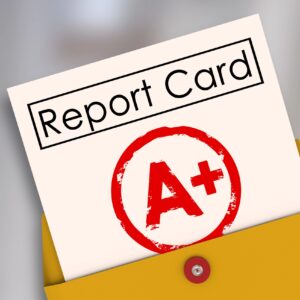

Send Emails? Then This Is For You…
For a long time now, whenever people have received an email from me that I’ve sent from my phone, they’ve seen this as part of my signature:
Sent whilst out and about so please excuse any typos, predictive text mishaps or short replies.
I set it up following a workshop I’d run with a team where, during a discussion about how people pick up clues to your personal brand, it came to light that the boss was causing confusion with her emails.
Consistency of clues is key
One day, her team would get a message with a warm “Hi, how are things with you?” followed by a bit of background to the matter in hand, followed by a request for a task to be done, along with a courteous “Please” and “Thank you”. But the next day they’d get a message comprising a single sentence with just the task to be done.
The stark contrast in tone in the second instance made them think they’d done something wrong and the boss wasn’t happy with them.
On hearing this, the boss was shocked. She said, “Not at all! It’s just that sometimes I’m typing emails on my phone while I’m walking down the street, trying to avoid bumping into people or tripping over kerbs, so I keep it to the bare minimum.”
And all of a sudden, with just that extra bit of information, her team saw those messages in a completely different light. So I suggested the boss change her mobile phone’s email signature to let people know the situation she was in when typing. And being someone who likes to walk my own talk, I did the same and changed mine.
It’s not stopped there
Recently, I’ve taken it a step further and adapted my email signature in Outlook too.
I was compelled to do so after reading an article in The Times about the growing number of companies trying to combat their employees feeling they have to respond to emails even once they’ve left the office.
You see, I’ve come to realise that my brain is at its sharpest outside the 9am – 5pm working day. (Which isn’t to say I can’t function then, just that my synapses really fire at the beginning and end of the day.)
So, unless I’m due at a client’s to deliver a workshop or some coaching, I’ll often crack on with my to-do list when I wake up around 6.30am (or as early as 4.30am if I can’t sleep), and really knuckle down again after 5.00pm – on any day of the week, Saturdays and Sundays included.
It’s what suits me. But for the same reason that the team misread the boss’s curt message as ‘She’s unhappy with us’ I don’t want someone receiving an email from me in the wee small hours to think, ‘Jennifer’s obviously super-busy and she’s telling me her time is very important, so I’ll need to reply straight away’.
So here’s what I’ve added to every email sent from my laptop:
PS I have a flexible working week so often email at the weekend and after hours. Please don’t feel you need to reply until you’re in work-mode yourself.
It works for me and if you think it might work for you – and your personal brand too – feel free to pinch it and use it, or edit it to fit your communication style. (I’ve noticed a number of my contacts have already adopted similar mobile signatures after seeing mine.)
What adaptations have you made to your email signature – on your phone or laptop – and why? And what response have you had? I’d love to know and there’s a comment box below just waiting for you to tell me. Thanks!







Hi Jennifer,
Thank you for sharing your wise words as always. It’s nice to know we are all different and personal branding helps us stay authentic. When people know it is our way and not meant to be about them 🙂
I’m glad that helped Helen. You’re right about it not always being about other people but, to quote my other half, being able to say “That’s just the way I roll”.
This is a great idea which I really like, however, one draw back is that in an organisation the email signature is often controlled by IS so that all email signatures have the same format so to make this change actually requires a change to the organisation email signatures! Will look into this though and see if there is any way to be able to adapt individual signatures to allow for the flexibility we do promote as a business, to be recognised.
Good point. Hadn’t thought of that.